In December of 2018, the La Villette exhibition center held an exhibition named Manga <-> Tokyo about the representation of Tokyo’s city in Manga, anime, and other forms of popular media such as Kaiju movies and Tokusatsu.
The exhibition was curated by M. Kaichiro Morikawa, an architect and associate professor at Meiji University who is tied to the Cool Japan governmental program. In 2004, M. Morikawa commissioned the Otaku: Persona = Space = City exhibition at the Japanese pavilion of the Venice Biennale’s Ninth International Architecture Exhibition.
For Manga <->Tokyo, curator Morikawa associated himself with legendary animator and director Yoh Yoshinari and designers Shigeto Koyama and Tsyuyoshi Kusano to come up with the exhibition’s visual identity and mascot.
On December 9th, 2018, Yoh Yoshinari, Shigeto Koyama, and Tsuyoshi Kusano came all the way to Paris to hold a panel at the exhibition.
They discussed various subjects around their career, their workflow in creating the exhibition’s mascot, and their feeling on the anime industry.
We invite you to read until the end as you will find the details of the special giveaway we are holding related to this publication.
Like our content? Feel free to support us on Ko-Fi!
Shigeto Koyama: Bonjour! It’s the only French word I know. Shall we start? Hello everyone, I’m the designer Shigeto Koyama. I’ll introduce the participants of today’s panel.
In the middle, animator, director, and designer Yoh Yoshinari. And next to him is Graphic designer Tsuyoshi Kusano.
Starting with myself, I work as a Character and Mecha Designer at Studio TRIGGER alongside M. Yoshinari, and I also sometimes work alongside M. Kusano. I have worked on Heroman, Big Hero 6, and Kill la Kill. For Kill la Kill, I worked together with Yoh Yoshinari at Studio TRIGGER.
Lately, I also worked on Darling in the Franxx.
Currently, we are working on Promare, a feature film which will come out next year. We decided to work on a movie with the same team who did Gurren Lagan.
About Mr. Yoshinari…
Yoh Yoshinari: Should I introduce myself?
SK: No, I’ll do your introduction. M. Yoshinari is a very famous, exceptional animator in Japan. He started as an animator before his 20’s, which earned him lots of respect. Are there people who know about Mr. Yoshinari?
(Nearly everybody in the room raises his hand)
Oh! Incredible!
YY: Really? It’s just French people being polite, isn’t it?
SK: Mr. Yoshinari works at Studio TRIGGER and is also a director. He directed Little Witch Academia. Did anybody watch it?
(Once again, most of the room raises its hand)
SK: That’s a lot of people!
YY: Thank you very much.
SK: There are other works he too. Valkyrie Profile, a video game. Evangelion too. You worked on Eva as an animator, right?
YY: Yes, I only worked on the action scenes, and I’ve never drawn the characters once.
SK: These ones are TRIGGER productions. Is that an illustration you did for advertising? There’s Kill la Kill, Little Witch, and Inferno Cop.
YY: Yes, although I haven’t worked on Inferno Cop. Do you know about it?
(Once more, most of the room raises its hand)
YY: So you know about it!
SK: I’m so glad! Well, seems like I didn’t need to introduce Mr. Yoshinari, as you all know about him. He’ll start a live drawing in a bit.
Regarding the exhibition’s poster, it’s Mr. Yoshinari who did all the designs. He referenced many shows, such as Gundam, Eva, Godzilla. There aren’t many people in Japan who can draw all these characters. This is why Yoh Yoshinari was tasked with it.
All the graphic elements, such as the logo and the letters, were taken care of by Mr. Kusano. Kusano designs logos, posters, and Blu-Ray boxes for many anime. He also teaches at University. He’s a great person.
But we actually had a little meeting before coming here, and he insisted on having a beer, that’s why he’s like this. So let’s take a look at some of his works. He did the logo for Kojima Productions. He created the logo for Kaguya Luna, a Vtuber. Right now, VTubers are really popular in Japan. He also took care of the design of the panels of the Manga*Anime*Games exhibition, which was held at the National Art Center in Tokyo. He obviously took care of all the graphic elements of this exhibition too. Here’s another one of his works, the DVD box for Eureka Seven. That was pretty bold, right, not showing any of the characters on it, but it still looks cool. Some work for Idolm@ster. He’s got his own design company which takes care of DVD and Blu-Ray boxes’ designs for many titles in the anime industry.
While Mr. Yoshinari will be drawing, we will be discussing anime with Mr. Kusano.
YY: I’ll be too busy drawing, so I’ll let Mr. Kusano talk about the complicated stuff.
SK: So let’s start, let’s talk about anime. Do you all watch anime? Do you watch Japanese anime regularly? Ok, so most of the room does. Mr. Kusano, can you name a few anime and Manga you like?
Tsuyoshi Kusano: The first that comes to mind is Katsuhiro Otomo’s Manga Akira.
SK: And as far as anime goes?
TK: Katsuhiro Otomo’s Akira.
SK: you really do like Akira. You even got the jacket from Akira. What about Mr. Yoshinari? What anime has inspired you?
YY: For me, it’s the Japanese robots show Mobile Suit Gundam.
SK: And for mangas?
YY: When I was a kid, I used to like Fujiko Fujio’s mangas a lot. Do you know them? Not a lot of people seem to know them. Maybe you know their Manga, Doraemon?
SK: But Mr. Yoshinari, you also read a few French and American comics, don’t you?
YY: I do, but as I only know their Japanese names, I don’t feel confident in naming them. Compared to anime and Manga, the drawing style is different in French Bande Dessinée.
SK: What are the specifics of Japanese Manga and anime’s drawings, in your opinion? At least, what tells them apart from other countries’ productions?
YY: To me, the main difference is that the core does not lie in the art of drawing itself but in the storytelling, and the drawings serve the storytelling. In comparison, the centerpiece of French Bande Dessinnée is the drawings, which is why it is considered part of the Arts, unlike in Japan.
SK: But in my opinion, you’ve been taught and trained to create such art.
YY: Creators have a very different role in Manga and anime, though. Manga is a very individual process, whereas anime production is a collective effort where animators have the task to focus only on the drawings. The work of animators is closer to French Bande Dessinnée artists in their relationship to drawing.
SK: I’ve been working with Mr. Yoshinari for a while now, and one day he told me he knows how to draw anything. When he came to the meetings during Kill la Kill or Gurren Lagan‘s production, he really knew how to draw everything. That’s why we gave him the nickname “The dreams factory.” He’s a factory in which you just need to input the raw materials, and the products come out. And really fast too. Just imagine if there were a hundred people like Mr. Yoshinari.
Coming back to the topic of anime and Manga’s characteristics, what is your opinion on it, Mr. Kusano?
TK: In American comics, the main characters are very muscular. There’s a heavy focus on their body and the improvement of their figure. For example, in Japanese productions in Gundam or in Akira, it’s not about the main character upgrading their physical form, but rather about transformation.
SK: And the characters are often vulnerable, even weak, like young boys.
TK: yes, they are often weak. But because I am weak and vulnerable myself, I identify with these characters.
SK: That’s what he says but let him drink some alcohol, and he transforms into a Super Saiyajin. He’ll become as strong as Tetsuo.
What led you to work as a Graphic Designer? Was it because you had an interest in anime and Manga?
TK: That’s right.
SK: And what was your first work?
TK: It was for Fullmetal Alchemist.
SK: But before working for anime and manga-related products, you worked for brands like Shiseido, right?
TK: Yes, indeed.
SK: So you work for various fields, but Manga and anime are your specialties. Shiseido is an esteemed brand in Japan, so if given a chance between working on anime and Manga or for a big brand like Shiseido, many would instead choose Shiseido.
TK: But I’m an otaku.
SK: I feel reassured. Have you had fun working on these otaku-related works?
TK: I’ve felt that I could find happiness for myself and share some joy with society by working in this field.
SK: You do watch a lot of anime, don’t you? Even more than me.
TK: I’d say you’re the one who isn’t watching enough of it.
SK: What has been an anime you’ve watched lately which you’ve found interesting?
TK: Zombieland Saga
SK: You really are an otaku. What about you Yoshinari, do you happen to still watch anime?
YY: I’m obviously watching Gridman. I’m sorry, but if I am to talk, I won’t be able to focus on my drawing. I’d rather not speak.
SK: So we’re basically just here to watch Yoshinari draw. We’ve visited the exhibit before coming. What was your opinion about it, Kusano?
TK: I’ve found the structure of the exhibit fascinating. It’s divided into six parts which follow each other so that the visitor can grasp the context of anime and manga creation. You have the first part about the relationship between reality and fiction, then one about destruction and reconstruction, and so on. There are many production materials shown, and one can enjoy seeing original manga panels. Still, to me, the most interesting is being able to understand the context behind the works and being able to witness the evolution that has occurred over time.
SK: As you know, most anime studios are gathered in Tokyo, whereas thanks to digital drawings, there are more and more manga authors who now live away from it. If there happens to be a nuclear explosion over Tokyo like in Akira, it’ll be the end of anime! Kusano and Yoshinari, you both live in Tokyo. Were you also born in Tokyo?
YY: I was born in Tokyo, yes.
SK: Really? I didn’t know you were born in Tokyo.
YY: In the end, all three of us were born in Tokyo.
SK: We’re all City Boys. How do you find life to be in Tokyo?
YY: Even though I say I live in Tokyo, I’m not living in the city center, I live far off in a rural area, so I’m not a city boy.
SK: What about you Kusano?
TK: I was born in Meguro, but now I live in Shibuya.
SK: So you really are a City Boy.
TK: When watching movies like Totoro, one can feel there is a fantasy about life in the countryside, but as you can see in the exhibit, many works take place in Tokyo. The pieces of the exhibition were chosen to show this evolution.
SK: Kusano, you said you really like Akira, but what is the work that makes you most think about Tokyo, Yoshinari?
YY: I don’t have any particular liking for Tokyo, so I wouldn’t really know. Many works unfold in fictional worlds. If the work takes place in Tokyo, that work seeks a form of realism because to show that it is taking place there, you need to accurately show that it’s taking place there. As soon as it is decided that the story takes place in Tokyo, it’s already leading the work in a particular direction, even as far as art direction goes. When I was a child, most works weren’t looking to be this accurate. That’s why there weren’t nearly as many works taking place in Tokyo.
TK: I think Yoshinari’s words are really on point. In the exhibition’s booklet in a text written by Professor Morikawa, who is this exhibit’s curator, he quoted these words from director Mamoru Oshii: “Strangely enough when the place where the story unfolds in anime is not specified, it usually takes place in Tokyo.” When Yoshinari said that the animes he watched as a kid took place in an unknown, fictional place, they would be inspired by Tokyo, and one could assume they took place in Tokyo. Lately, I’d say from the 2000s onward, we have seen a surge of works where the city can be clearly identified. For example, in Love Live or Your Name, the places are meant to be recognized.
SK: When talking about Tokyo in Japan’s context, we lean towards thinking it is the center of Japan. You have many dialects spoken throughout the country, but the Japanese spoken in Tokyo is considered the standard one. The people creating these words, though, are not standard. Kusano, for example, you always pull out all-nighters. That’s not standard.
TK: I don’t have much choice about it. In Japan, people work day and night without ever resting.
SK: Anime studios never sleep. Yoshinari, do you also pull out all-nighters?
YY: I’m more of a night person, so I work at night but sleep during the day. I would still like working conditions to change, though. Sorry, let’s change the subject because this is getting a bit too heavy.
SK: Let’s talk about our favorite characters then. Do you have a favorite character?
YY: My favorite character? They aren’t what I’m most interested in. I’m more interested in a work’s storytelling. Most anime characters are based on archetypes which you would not encounter in real life. Their words and behavior are exaggerated; you would not meet real people who behave like that. As I grew up and became an adult, I found it harder to relate to these characters. What about you, Koyama?
SK: I don’t really have a favorite character. I prefer Mechas. I have a question for you French people. I know that Grendizer is very popular here but did you like it for its character or robot?
The audience: The robot!
SK: Maybe I’m French too. And you, Kusano, do you have a favorite character?
TK: Yeah, Kaneda.
SK: How surprising. But you also like Bishojo characters?
TK: Yes, I love them.
SK: Who is your favorite female character?
TK: I love anime, but she’s not an anime character. Lately, I have taken a liking for V-Tubers, like Kaguya Luna and Kizuna Ai.
SK: But what about anime characters?
TK: These days, there are fewer anime characters with an appealing personality. That’s probably because of recent trends. Storytelling has become more and more important, and it leaves less room for characters to stand out, to have iconic characters. At least that’s my opinion when looking at 2018’s productions. Amongst the anime you have seen this year, has there been a female character who stood out to you, Shigeto? Even if you did not like the show, was there a character who left an impression on you?
SK: It’s true that right now, I can’t think of such a character. Maybe Kizuna Ai? I think her design is exceptional.
TK: I’m not trying to say that characters today are less attractive. But I’d like to reflect on the popular shows that were produced this year. What show can you think of that was aired in January?
SK: Yuru Camp. That was January, right?
TK: In April, there was Sword Art Online Alternative, right? In summer, there was Highscore Girl, which was reasonably well-received even though opinions were scattered. In the Fall, Gridman, Goblin Slayer, Rascal does not dream of Bunnygirl Senpai, Sword Art Online Alicization, and That Time I got reincarnated as a Slime. These are the popular shows for the Fall cours. For January, I would add Violet Evergarden, Karakai Jouzu Takagi-san, and A Place Further than the Universe. Formerly, it was the characters who would harness the attention of the viewers. But now, when people watched Yuru Camp, they went camping. Even I went camping although I never had before. Or looking at Zombieland Saga, what makes the appeal are the different music genres they go through. It’s not the characters who retain the viewer’s interest anymore but all the thematics surrounding the show. At least that’s my thought about it.
YY: We’re working every day to create such characters, so we’re surrounded by them at all times. It was tough to develop the character who is used as a mascot for the exhibit.
SK: We should talk about how you came up with her.
TK: To create her, we discussed with Professor Morikawa. Koyama acted as some kind of translator between the curator and us artists. Yoshinari started drawing, and we started thinking about the story elements.
SK: Usually, when creating a character for anime, there already a story, so it gets made according to the story. But in this case, it’s a character for an exhibition, so there’s no story. So we created her as a museum curator who serves as a guide through the exhibition. But a curator is usually someone considered very serious. They definitely would not dress as Sailor Moon. So we went for a sober design because of her profession.
TK: But there was one further demand from Professor Morikawa, which was Cosplay. If you look at the poster, you can see her cosplaying various characters. There’s Evangelion, Gundam, Sailor Moon. Cosplayers are usually real people, 3D people who impersonate 2D characters. That’s the whole purpose of it. But when a 2D character cosplays another 2D character, you lose the very meaning of Cosplay. If Yoshinari’s character cosplays as Sailor Moon, it’s just as he’s drawing a character wearing Sailor Moon’s outfit. Drawing a character who is doing Cosplay is an arduous task. Another difficulty about it was that, even if the character changed outfits, her personality and traits would not change.
YY: That’s right, it was hard. Imagine it as Goku from Dragonball who would wear Sailor Moon’s hair.
SK: You would not know if the character is Goku cosplaying as Sailor Moon or the other way around. We had to create a character who did not show too much personality so that it was clear that she is a character doing Cosplay and not just dressed like that.
TK: This process goes against the way we usually work, which made it a difficult task. We were able to give her some subtle traits to set her apart by having her wear glasses.
SK: I don’t know how it is perceived overseas and what I am about to say may be filled with prejudice, but people wearing glasses are often thought of as being otakus in Japan. The image of otakus is tightly associated with glasses. As you may notice, all three of us are wearing glasses. At least in anime, glasses have this particular meaning.
TK: I also remember that throughout our discussions together, Koyama said we should not try to create a main character; she should not look like a heroine.
YY: We wanted her to wear glasses to show she is a side character.
SK: She should leave the impression of being a companion to the main character. Amongst works you’ve watched, I don’t think there are many where the main character is wearing glasses. That was our thought process which led us to give her glasses. This is only one of the many codes in anime and Manga. We could also talk about hairstyles and colors. When a character has black hair in anime or Manga, one could think it’s because Japanese people mostly have black hair, but that’s not it at all. In mangas, the main character is the one who appears the most, so it’s the character the author draws the most. When the author gives a character black hair, he can just fill the space. Look at Astroboy; his hair is entirely black to avoid the strain of drawing the hair’s curl. It makes the work easier. By making his hair look like it has two horns, Tezuka made him recognizable. I wanted to go against this trend, and when I was young, I drew characters with blonde hair when drawing Manga. It took so much time that the deadline came while I was still working on the hair. This is just one example of the many processes and codes in Manga and anime to save time. Are there any of these processes you use to save time yourself?
TK: There’s a reason why we have to find ways to save time and effort when it comes to Manga and anime in Japan. We have heavy time and budget constraints. Creators don’t have much time because they need to output one anime episode or one manga chapter per week.
SK: I guess there are many differences between the way foreign animation and Japanese animation are produced, particularly about the methods to save time. Let’s hear Yoshinari’s opinion about it.
YY: First of all, animators need to draw so many pictures, so many sheets, that they are required to simplify the drawings. Animation is a western invention, and when watching American cartoons, they are constantly moving; they use so many sheets of drawings. Outside Japan, animation is often done at 24 frames per second. That’s different from Japanese animation, where we use less of them because of the time and budget constraints. This explains why in anime, even still scenes are considered essential and bear a lot of meaning. In my opinion, Japanese animation’s particularity was born from having to concentrate the meaning in a few frames. Japanese animation did not seek to be realistic and was very inspired by Disney. Osamu Tezuka, the pioneer of Manga was influenced by Disney. One may say that the source of Japanese animation is Disney. But even though the origin is found in Disney, we did not have the same resources, so each picture needed to bear a lot more meaning. That’s how Japanese animation took the path it did. It wasn’t a direct evolution but more of a deviation with some circumvolution.
SK: When I worked on Big Hero 6, while I designed Baymax, you’ll notice that his legs and feet look like tubes. They’re not sharp. I took inspiration from Tezuka when thinking of these thick legs. So while working for Disney, I took inspiration from Tezuka, who himself was influenced by Disney. The influence from America on Japan was returned. It has come full circle. Even authors like Otomo were inspired by French authors, like Moebius. There is a worldwide influence loop.
Let’s maybe end with an AMA?
Audience: Lately, foreign streaming services, like Netflix, have been heavily investing in anime. In your opinion, what has triggered economic interest for anime from foreign investors, and if foreign capitals are flowing into the anime industry, are you able to keep it as an entirely Japanese process, without foreign influences and directives?
SK: It’s been 4 or 5 years now since Netflix has been interested in Japanese productions, but they have shown the will to be heavily implicated for one year. For now, Netflix offers two options. One is to commission a work, in which case the production follows Netflix’s requests. The other is to let us create our own work as we like. Yoshinari, you worked with Netflix for Little Witch Academia. Did you notice anything different for its production compared to other works?
YY: Netflix did not have any specific requests, but it’s probably because it was at the very beginning of their activities within anime. Now they had time to analyze the trends and what kind of works audiences are expecting and are thriving. Netflix is very sensitive to trends. They have started making requests following these trends. Because they had time now to spot what shows are successful or not, there is now less freedom.
Audience: In Little Witch Academia, there’s a clear parallel between Magic and Animation. I wanted to ask Mr. Yoshinari what were the messages he tried to convey through it in this work.
YY: The techniques we use to do animation, I found it resembles Magic, so I thought about doing a parallel between the two in Little Witch Academia. Animation in itself is not helpful to society, nor does it have the power to change society. At least, it can not straightforwardly change society. But animation can touch people’s hearts. It’s very similar to the way Magic works in the show. It does not have any practical use, but it can make a difference in people and their emotions.
Audience: When Japanese anime or video games are exported overseas, it is not uncommon for them to face censorship because of their depicture of violence or erotism. How protective are you of your works when it comes to changes made to them for global distribution?
SK: I’ll share my opinion about it, and I think Kusano will agree with me. When we create a work, we don’t want them to include negative or disturbing subjects. We don’t want them to disturb our audiences. But if our works only included happy and righteous topics, they would lack stimulation. As a creator, I don’t want to act as if violence, sex, and drugs didn’t exist. The topic of censorship in anime and Manga can’t be overlooked, as lately there are more and more constraints and less freedom. But the more we feel this pressure, the more we want to talk about taboo subjects. What do you think, Kusano?
TK: Compared to older times, works have become more detailed, expressions are more precise, and with these changes, the rules have become more strict. There is also a variety of fetishes depicted in works requested by the audiences who have increasingly specific preferences. I’m working on an Eromanga right now, so these are topics I think about myself. It is not uncommon to have famous designers work on the covers of Eromangas or pornographic mangas.
SK: Sometimes some brands are dissatisfied with our productions. With Yoshinari, we worked on a show whose title is based on underwear. We did encounter some trouble as some episodes were problematic and scandalous and caused controversies. Director Imaishi came to see the staff who worked on the show, patted our backs, and said, “You did a good job!”. That’s the kind of place Studio Trigger is, so we’re able to have some fun.
Thank you for reading until the end. In addition to this post, we are giving away two exemplars of the Manga<->Tokyo exhibition’s book on our Twitter account. The book was written by Professor Morikawa and also contains one more interview of Yoh Yoshinari, Shigeto Koyama, and Tsuyoshi Kusano. The book comes with an acrylic stand of the characters designed by Yoh Yoshinari! To take part in the giveaway make sure you are following our Twitter account and that you share, either by Retweeting or Quoting this tweet! Winners will be drawn on April 15th.
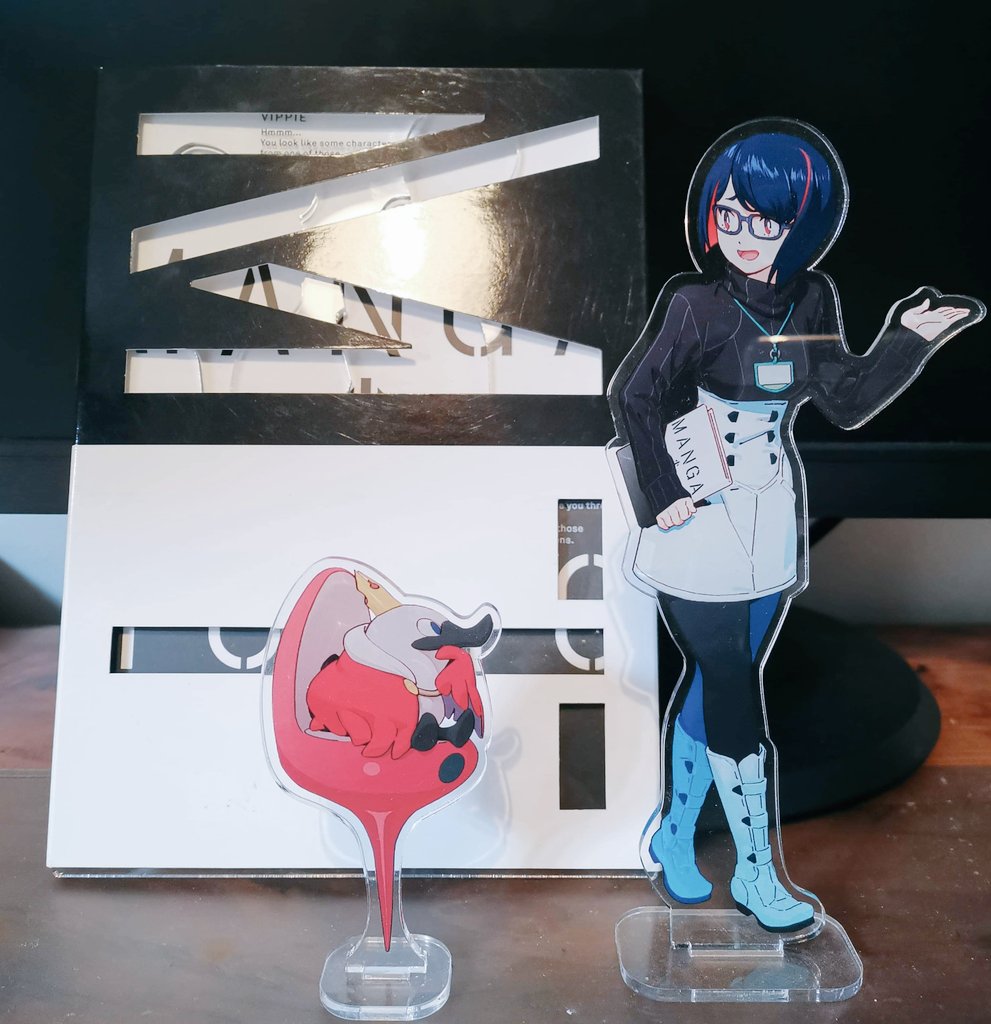
Like our content? Feel free to support us on Ko-Fi!
You might also be interested in
Benoît Chieux, a career in French animation [Carrefour du Cinéma d’Animation 2023]
Aside from the world-famous Annecy Festival, many smaller animation-related events take place in France over the years. One of the most interesting ones is the Carrefour du Cinéma d’Animation (Crossroads of Animation Film), held in Paris in late November. In 2023,...
Directing Mushishi and other spiraling stories – Hiroshi Nagahama and Uki Satake [Panels at Japan Expo Orléans 2023]
Last October, director Hiroshi Nagahama (Mushishi, The Reflection) and voice actress Uki Satake (QT in Space Dandy) were invited to Japan Expo Orléans, an event of a much smaller scale than the main event they organized in Paris. I was offered to host two of his...
Akira stories – Katsuhiro Otomo and Hiroyuki Kitakubo talk at Niigata International Animation Film Festival 2023
Among the many events taking place during the first Niigata International Animation Film Festival was a Katsuhiro Otomo retrospective, held to celebrate the 45th anniversary of Akira and to accompany the release of Otomo’s Complete Works. All of Otomo’s animated...

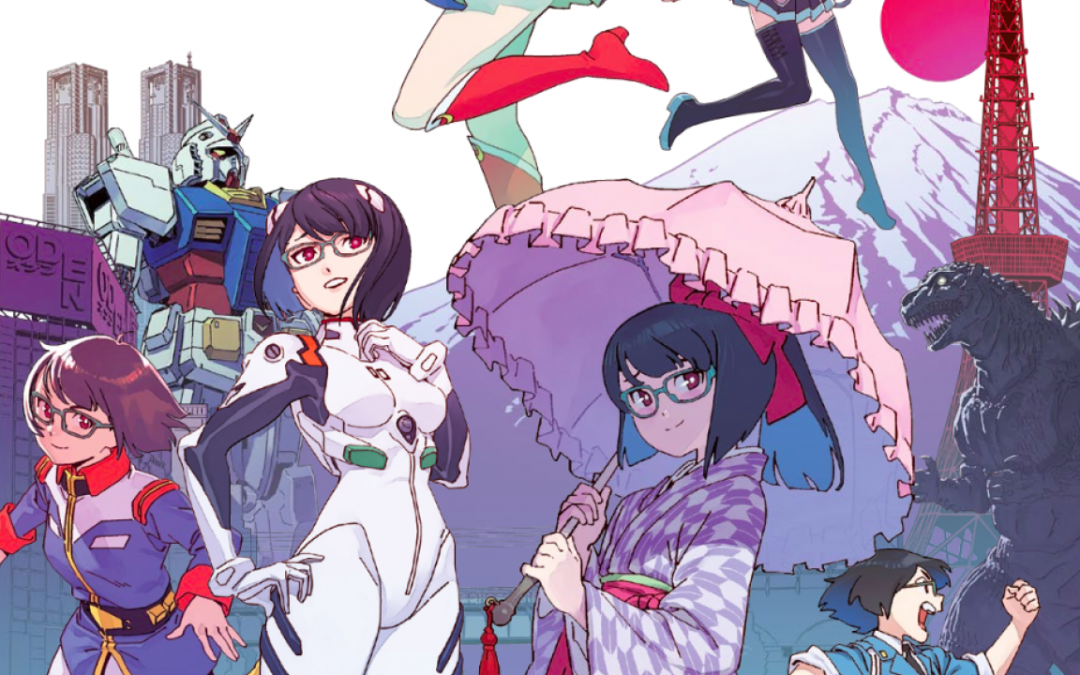
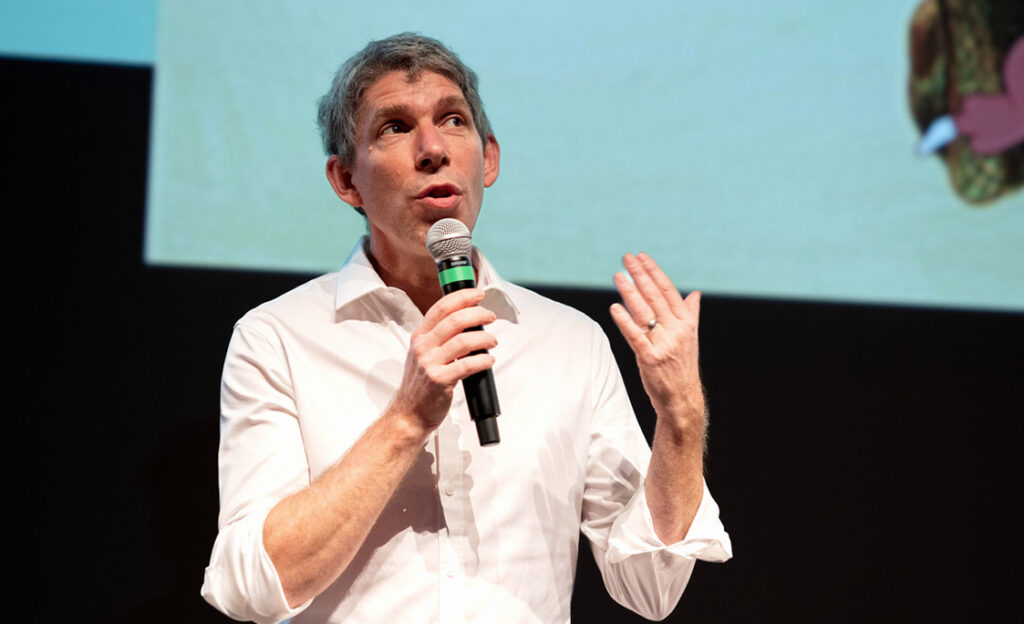
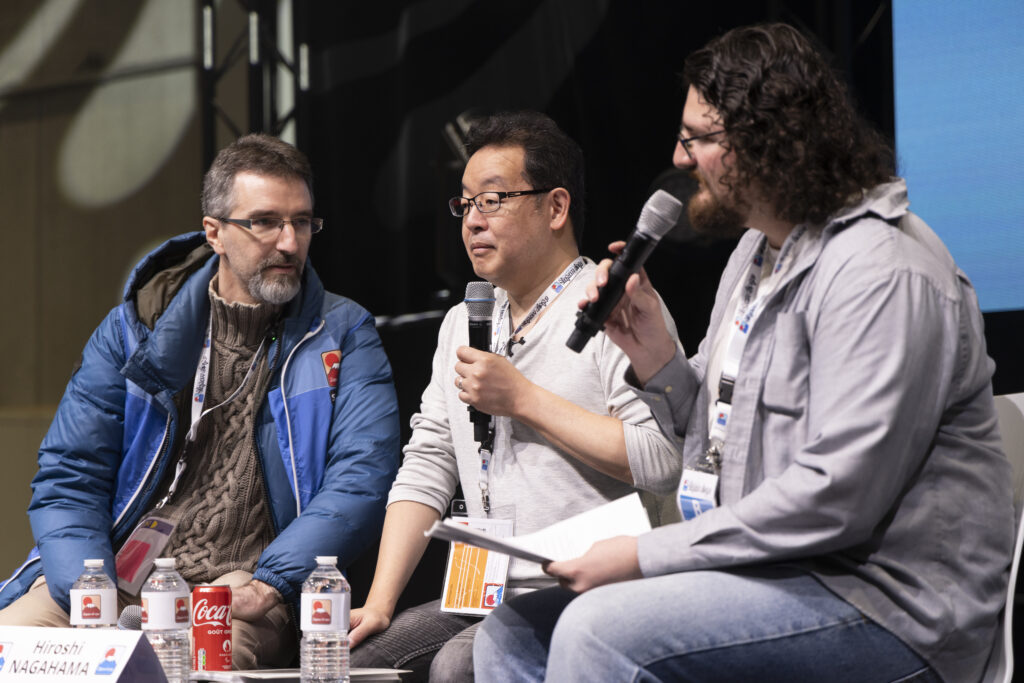
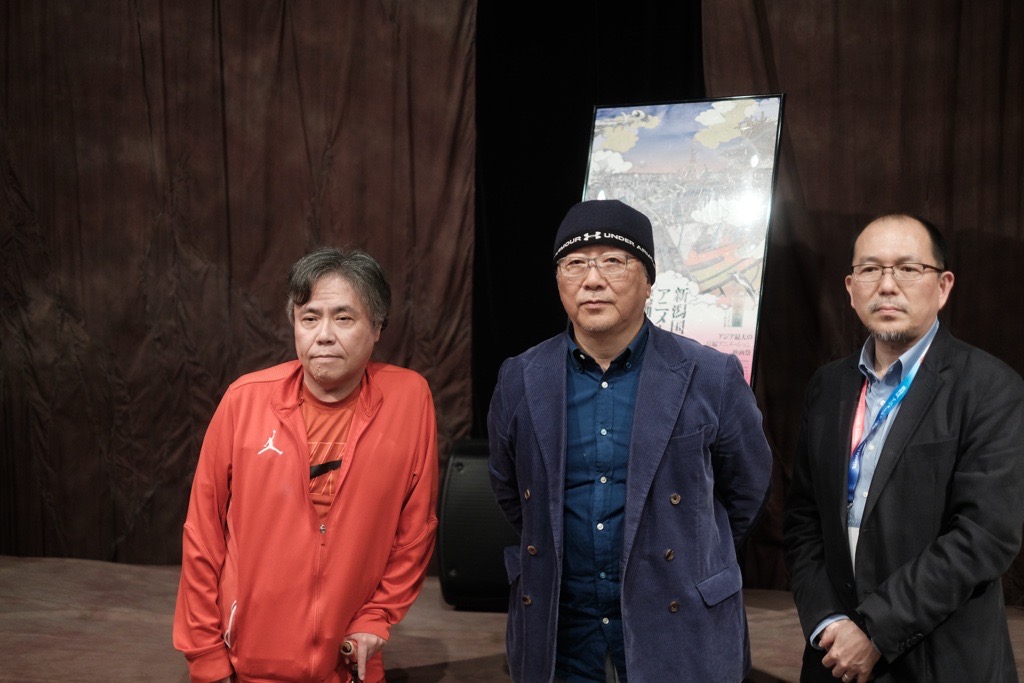
Recent Comments